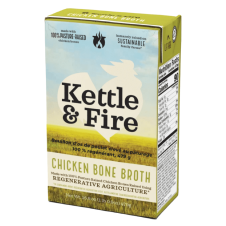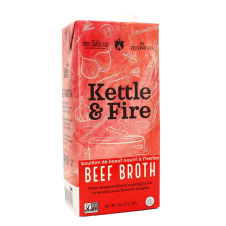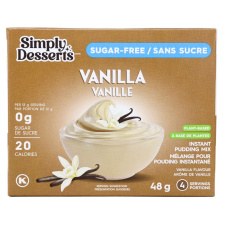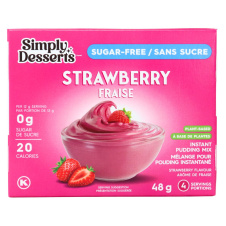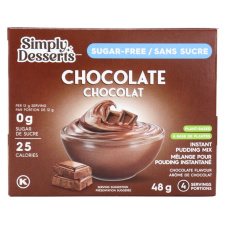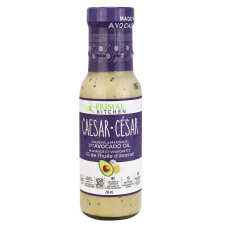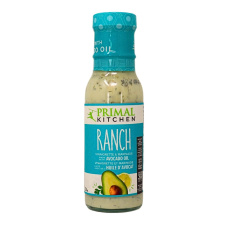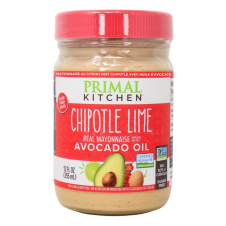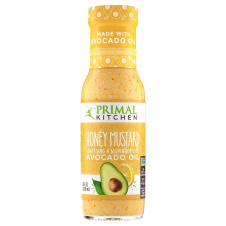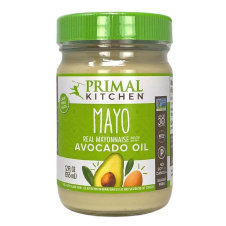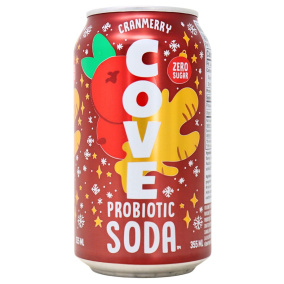
The Ultimate Guide To Popular Diets
Diet this, diet that….where do you even start? We know how confusing it can be for someone who just wants to learn to eat a little healthier and feel great about their food choices! We know everyone is different, and there’s a food lifestyle that works for you (yes you!). We’re compiling some of the most common diets in 2022, so you can see which diet is right for you!
Table of Contents
Keto
What Is A Keto Diet?
A keto diet is a diet that focuses on a food distribution of high fat, medium protein, low carbohydrate. It is a diet that is commonly used to help aid with weight loss, and increase your fat burning metabolic state! This means that your body switches to focus on burning fat, rather than carbohydrates. When following a keto diet, the most important thing is to track how many Net Carbs you’re consuming in a day!
What Are Net Carbs On a Keto Diet?
Net Carbs can be calculated by taking your total carbohydrates in a product, then subtracting fiber and sugar alcohols. These two things are not broken down by your body, so we can subtract them from our total. This leave us with our final Net Carbs in our food!
Remember…
Net Carbs (g) = Carbohydrates (g) - Fibre (g) - Sugar Alcohols(g)
What Is Ketosis?
When your body is low on carbs for a while, it will switch over to a state known as ketosis! Ketosis is when your body is primed and ready for burning fat, and will prioritize fat over carbohydrates when making energy for your body. This means your body is at its best for burning fat, leading to some experiencing higher weight loss on a ketogenic diet!
Types Of Keto Diet
There are a few variations of the keto diet, depending on how many net carbs you feel comfortable consuming in a day. And remember, it’s alright to try different things, and see what works best for you! Here are some standard keto diets below:
The Standard Keto Diet (SKD)
This version of the keto diet restricts your net carb intake to 20 and 50 grams or less per day. This is the best choice for you if you’re just beginning your keto diet, or looking to scale back from a more intense longer-term keto diet.
The Targeted Keto Diet (TKD)
This version of the keto diet works well for individuals who have a more active lifestyle and need a bit of carbs to fuel their workouts. Allows for 20 to 50 additional grams of carbs per day, before and after workouts.
The Cyclical Keto Diet (CKD)
This version of the keto diet works for professional athletes who are focused on muscle growth and performance. In this version, you follow the standard keto diet for 5-6 days out of the week, then use your remaining 1-2 days to focus on higher carb consumption. In the 1-2 day period, you have the ability to consume 400-600 grams of carbs!
What Can I Eat On A Keto Diet?
There is a wide list of the foods that you can have on a keto diet: unprocessed meat/fish/eggs, veggies, natural fats, sugar-free and high-fat dressings/sauces, low-carb high-fat nuts, natural sweeteners, unsweetened nut milks. Focus on low sugar, low carb, and high fat and protein!
Paleo
What is a Paleo diet?
What is a Paleo diet, you might be wondering? The paleo diet is about getting back to the basics with more natural, processed ingredients! And taking a step back from processed, pre-packaged foods. The Paleo Diet is also known as the “Caveman” diet – since the primary focus is on eating natural foods that could have been foraged in the caveman days!
Why Go Paleo?
The main idea behind the paleo diet is that as humans, we consumed these unprocessed foods for thousands of years. Our bodies have evolved to utilize these natural foods, so it’s about getting back to what our body is more conditioned towards! And away from the processed foods we’ve gotten used to relying on.
The Paleo diet is appealing to many because the primary focus isn’t on counting calories, portion sizes or weight loss. The main focus is on what you are eating, and how your body responds to food!
Are there benefits to eating Paleo?
Some reported benefits of going on a Paleo diet include feeling more energized, clarity and mental alertness, balancing cholesterol, and contributing to lower blood pressure!
When the intake of highly processed foods is removed from your diet, it allows you to focus more on natural ingredients! Leading to feeling better about your food choices. That means more fibre, minerals & vitamins!
What Can I Eat On A Paleo Diet?
There is a wide list of the foods that you can have on a Paleo diet: Meat (check for any off-limits preservatives!), seafood, eggs, fruits & vegetables, tree nuts & seeds, natural fats/oils (make sure these are unrefined and unprocessed), herbs, spices, & seasonings, coffee & tea (with no cream & sugar), and natural sweeteners. Essentially, if your ancestors hunted it, you can consume it!
Foods to avoid on a Paleo Diet
Here are some foods that you should stay away from while on a Paleo diet: Processed foods, grains, artificial sweeteners (some are alright! It depends on your version of paleo), soda, processed sugars, trans fats, legumes, certain dairy products, margarine, and processed vegetable oils.
Whole30
What is a Whole30 diet?
The Whole30 diet is focused on eating whole and unprocessed foods for 30 days! This means that the focus is on increasing your intake of natural foods; high-quality meats & proteins, healthy fats, seeds, nuts, a whole lot of veggies, and some fruits! All natural and unprocessed.
Why Go Whole30?
You can choose a Whole30 diet for a variety of reasons! The Whole30 diet is not meant to be a permanent lifestyle choice, and the focus is not on weight loss. Instead, this diet is focused on eating clean, minimal, and unprocessed natural foods for 30 days! And resetting your relationship with food.
Some start a Whole30 diet to focus on cooking with more natural, less processed foods. Some others start this diet to assist with digestive issues such as inflammation, or gut issues in general.
Instead of focusing on weight loss, Whole30 is about changing your relationship with food & eating habits, by focusing on natural, unprocessed foods and ingredients!
What Can I Eat On A Whole30 Diet?
There is a wide list of the foods that you can have on a Whole30 diet: Meat, seafood, eggs, fruits & veggies, tree nuts & seeds, natural fats/oils (unrefined + unprocessed), herbs + spices + seasonings, and coffee + tea (no cream or sugar).
Here is a list of lightly processed foods that you can include in your Whole30 diet: Green beans + sugar snap peas + snow peas (lightly processed veggies that are mostly in their natural state), 100% fruit juice not from concentrate, vinegar, extracts (with no alcohol!), ghee (clarified butter), coconut aminos, and iodized salt.
Foods to avoid on Whole30 Diet
There are certain foods that you should try to avoid while on a Whole30 diet: Grains, legumes, dairy + all dairy products, refined vegetable oils, natural/artificial sugars & sweeteners, alcohol in any form, and common food additives.
Whatever your decision for choosing a Whole30 diet is, we’re here to help with a variety of Whole30 products for you to choose from!
Organic
So what does organic mean?
Organic means food that is produced in its purest and most natural form! This means that there is no use of antibiotics, hormones, pesticides, fertilizers, or genetically modified organisms (GMOs).
Why Shop Organic?
By shopping organic, you’re supporting natural farmers attempts to keep our earth clean from pesticides and artificial fertilizers! Organic farming also helps improve biodiversity. This means more natural food, without wondering what is in it. Organic foods are also required to be made without GMOs as part of their practice! GMOs are genetically modified organisms, usually crops that have been genetically modified in order to help them grow or bring out certain characteristics of the food during crop growth.
How to tell if a product is organic?
You can tell if a product is organic by the Certified Organic symbol that is on the packaging!
Canadian Products - will have a “Canada’s Organic” logo. This means that the product has met the Canadian government standards for qualifying as an organic products. This means being made without pesticides and other substances that are not allowed during the crop growth process!
American Products - will have a “USDA Organic” logo. This meant that the product has been verified by the U.S Department of Agriculture standards as organic. Similarly, this means being made without any substances that are not allowed during crop growth.
What Are the Benefits of Eating Organic?
Some benefits associated with choosing organic products include:
You are consuming fewer synthetic substances that can potentially be harmful to our health by choosing organic foods! Organic food also can have more nutrients, antioxidants, vitamins, since their growth is being allowed to happen naturally. When we opt for organic foods, we have more control over what we eat and where it is grown – this often means supporting local farmers!
Because you are not using pesticides, organic foods are less harmful for the environment.



